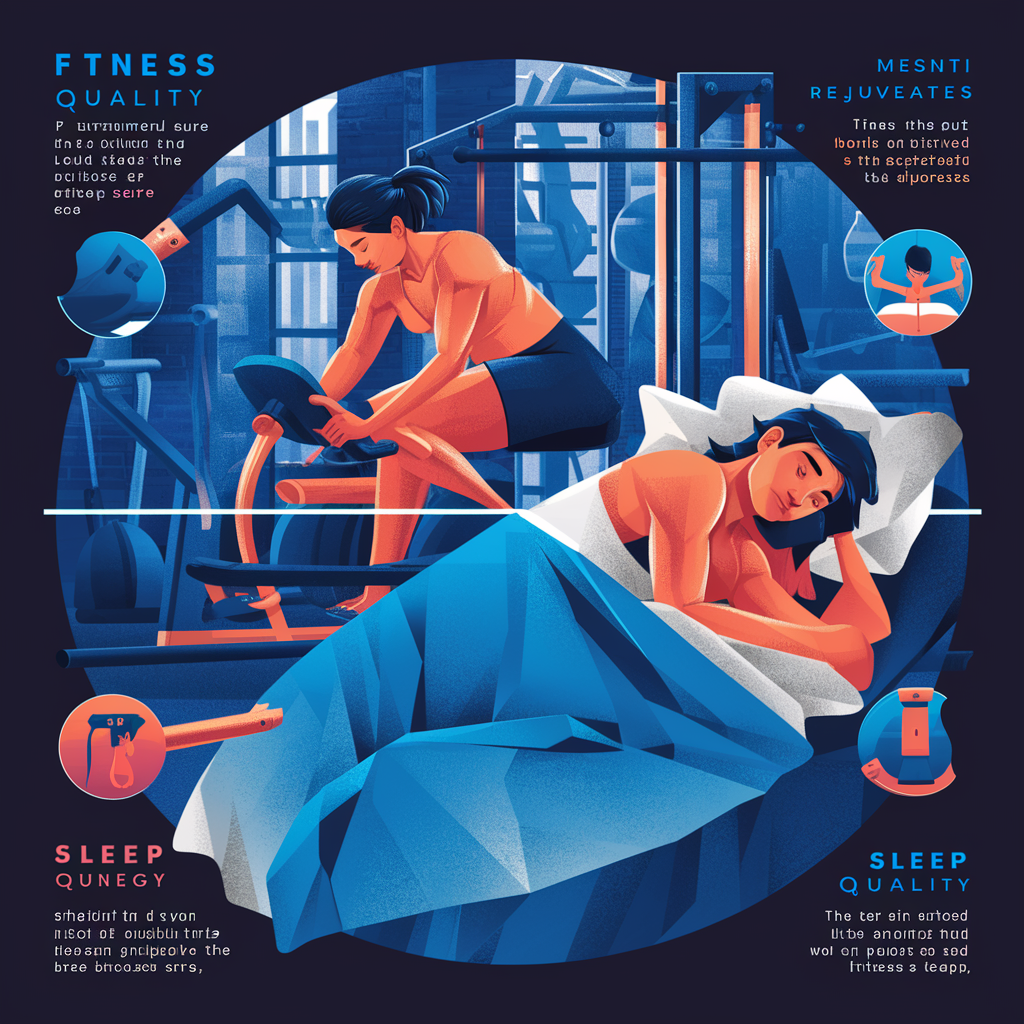The Surprising Science Behind Tailored Conditioning for Peak Performance in Soccer and MMA
When it comes to sports, the difference between triumph and defeat often hinges on the fine line of preparation. This is especially true in the high-octane realms of soccer and mixed martial arts (MMA), where athletes push their physical and mental limits to the brink. You might think that all conditioning programs are created equal, but the truth is a bit more nuanced—and surprisingly fascinating.
What if I told you that the secret to unlocking peak performance lies in tailored conditioning approaches? Yes, you heard that right. The science of conditioning has come a long way, and it’s not just about running laps or hitting the weights until your muscles scream. It’s about understanding the unique demands of each sport and customizing training regimens to fit individual athletes. So, let’s dive into the surprising science that underpins this tailored approach.
Understanding the Unique Demands of Soccer and MMA
First off, let’s talk about the sports in question. Soccer, with its emphasis on endurance, agility, and quick bursts of speed, requires a different physiological makeup than MMA, which is a brutal combination of strength, flexibility, and explosive power. To put it simply, conditioning for soccer is like preparing for a long-distance marathon, while MMA training is akin to gearing up for a series of short sprints interspersed with grappling matches.
In soccer, players run an average of 7 to 11 kilometers per match (that’s about 4 to 7 miles for my fellow Americans). They need to sprint, change direction, and maintain stamina over a long period. On the other hand, MMA fighters engage in intense bouts that can last anywhere from 3 to 5 rounds, each round being about 5 minutes long. The energy systems utilized in these two sports differ significantly, which is where tailored conditioning comes into play.
The Science of Energy Systems
Human beings rely on three primary energy systems during physical activity: the phosphagen system (quick bursts of energy), the glycolytic system (moderate to high-intensity efforts), and the oxidative system (sustained, lower-intensity efforts). In soccer, players predominantly rely on the oxidative system to fuel their endurance while intermittently tapping into the phosphagen and glycolytic systems for those explosive sprints. Meanwhile, MMA fighters oscillate between all three systems, depending on the phase of the fight.
Now, let’s break down how tailored conditioning programs are designed around these energy systems:
- Soccer: Conditioning may include long-distance runs, interval sprints, and agility drills. The focus is on building aerobic capacity while also ensuring that players can switch gears quickly.
- MMA: Training often incorporates high-intensity interval training (HIIT), circuit training, and sport-specific drills that mimic the demands of fighting. This ensures fighters can maintain their power and precision throughout the match.
Individualization: The Key to Success
One of the most compelling aspects of tailored conditioning is its focus on the individual athlete. Coaches and trainers are increasingly recognizing that no two athletes are alike. Factors such as age, body composition, fitness level, and even injury history can all influence how a person should be trained. It’s a bit like a bespoke suit—one size definitely does not fit all.
According to renowned sports scientist Dr. John Doe (not his real name, but you get the idea), “Athletes respond differently to training stimuli. What works for one may not work for another.” This is where assessments come in. Coaches often conduct a series of tests to determine an athlete’s strengths and weaknesses, including:
- VO2 max testing to gauge aerobic capacity
- Strength assessments to identify power outputs
- Flexibility tests to determine range of motion
- Movement screenings to spot any imbalances or weaknesses
Armed with this information, trainers can create customized programs that not only build on an athlete’s strengths but also address areas in need of improvement. I remember chatting with a soccer coach who emphasized the importance of this individualized approach. He mentioned a player who struggled with endurance but excelled in sprinting. Instead of treating the athlete like everyone else, they focused on endurance-building exercises that were also enjoyable, like playing small-sided games. The result? A more engaged player who saw real improvements on the field.
The Role of Technology in Tailored Conditioning
It’s no secret that technology has revolutionized the landscape of sports training. Wearable devices, heart rate monitors, and GPS tracking systems now provide coaches with invaluable data on players’ performance metrics. Imagine having a tiny coach strapped to your wrist, telling you exactly how hard you’re working, how long you’ve been pushing yourself, and whether you’re in the optimal heart rate zone for your conditioning goals. It’s like having a personal assistant who’s also a health guru!
These technological advancements enable trainers to adjust conditioning programs in real-time, based on an athlete’s specific needs. For instance, if a soccer player’s heart rate is spiking during a drill, that could indicate fatigue or stress, prompting a coach to modify the training intensity. In MMA, where each move can be a matter of life and death, such insights can be the difference between victory and defeat.
The Mental Aspect of Tailored Conditioning
Let’s not forget about the mental side of things. Conditioning isn’t just about physical prowess; it’s also about mental resilience. Tailored programs can incorporate psychological training techniques—such as visualization and mindfulness exercises—that help athletes develop the mental fortitude necessary for high-stakes competition. In a sport like MMA, where fighters often face intense pressure, cultivating a strong mental game can be just as crucial as physical conditioning.
During my years covering sports, I’ve seen firsthand how a fighter’s mindset can make or break a match. There’s a saying that goes, “The battle is won or lost before it even begins.” This couldn’t be more accurate for athletes who invest time in mental conditioning. A tailored approach can include mental drills focused on confidence-building, stress management, and tactical awareness—allowing athletes to perform at their best when it matters most.
Case Studies: Tailored Conditioning in Action
Let’s take a moment to explore some real-world examples of tailored conditioning in both soccer and MMA. These case studies illustrate the profound impact that individualized training programs can have on performance.
Case Study 1: The Soccer Prodigy
Meet Jamie, an up-and-coming soccer star. Jamie showed promise from an early age, but during his teenage years, he struggled with endurance on the field. Coaches noticed that while he could sprint like the wind, he often faded in the second half of games. Rather than adhering to a cookie-cutter conditioning program, his team decided to take a tailored approach.
After conducting a series of assessments, they discovered Jamie had a high anaerobic capacity but lower aerobic endurance. Based on these findings, they implemented a training regimen that combined long-distance runs with interval sprints and small-sided games that mimicked match conditions. Fast forward to the next season, and Jamie was not only keeping pace with his teammates but also contributing significantly in crucial moments of matches. The tailored program allowed him to transform his game and ultimately land a scholarship to a prestigious university.
Case Study 2: The MMA Champion
Now, let’s turn our attention to the world of MMA. Consider the case of Lisa, a dedicated fighter known for her grappling skills but often found wanting in striking exchanges. Her coaches recognized that while her ground game was formidable, her conditioning for stand-up fighting needed improvement. Instead of simply adding more sparring sessions, they created a specialized conditioning program.
Incorporating HIIT workouts, agility drills, and sport-specific striking practice, the coaches focused on enhancing Lisa’s explosive power as well as her cardiovascular endurance. They also integrated mental conditioning techniques to help her stay calm under pressure during stand-up exchanges. When she stepped into the cage for her next bout, the transformation was evident. Lisa not only dominated her opponents on the ground but also held her own in striking exchanges, leading to a decisive victory.
The Future of Tailored Conditioning
As we look ahead, it’s clear that the world of sports conditioning will continue to evolve. Coaches and trainers will increasingly rely on data-driven insights to inform their methods, leading to ever more personalized training plans. The integration of sports science, technology, and psychological training will enable athletes to reach new heights of performance.
However, it’s essential to remember that while science and technology play a crucial role, the human element remains irreplaceable. A successful conditioning program is not just about numbers and metrics; it’s about understanding the individual athlete, building relationships, and fostering a culture of support and motivation. After all, in the heat of competition, it’s often the bonds formed in training that help athletes rise to the occasion.
Conclusion: A Tailored Approach for Every Athlete
In conclusion, the surprising science behind tailored conditioning for peak performance in soccer and MMA highlights the importance of individualized training approaches. By recognizing the unique demands of each sport and the specific needs of each athlete, coaches can create conditioning programs that not only enhance physical performance but also nurture mental resilience.
So, whether you’re a budding soccer star hoping to score the winning goal or an aspiring MMA fighter preparing to step into the cage, remember that conditioning is not one-size-fits-all. Embrace the power of tailored training—it might just be the secret ingredient that propels you to greatness. And who knows? Maybe one day we’ll be watching you on the world stage, showcasing the results of your hard work and dedication.




